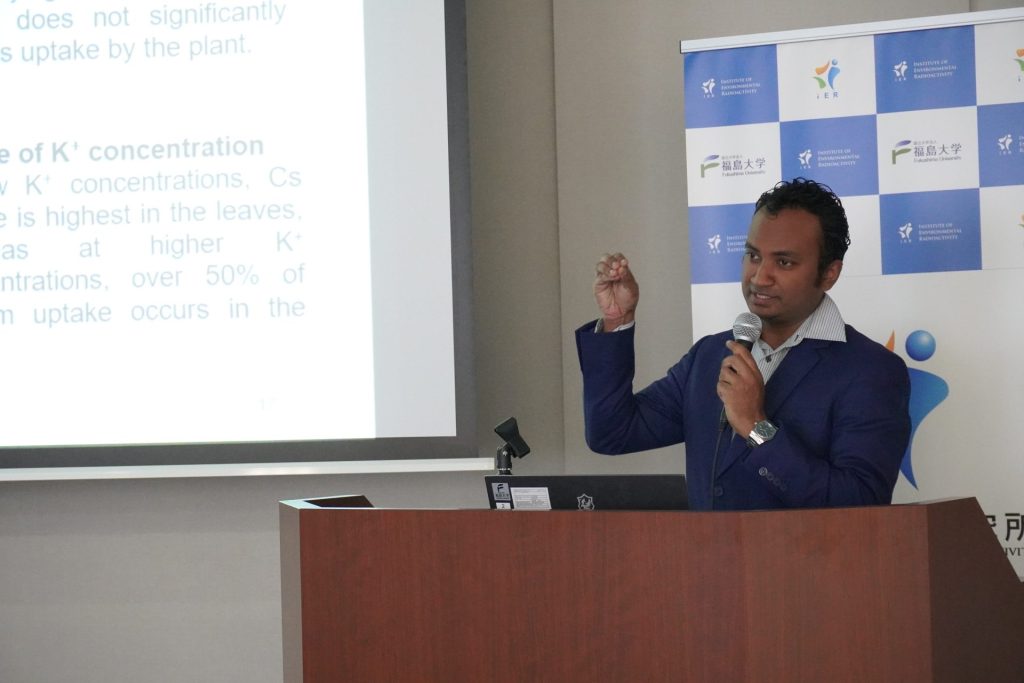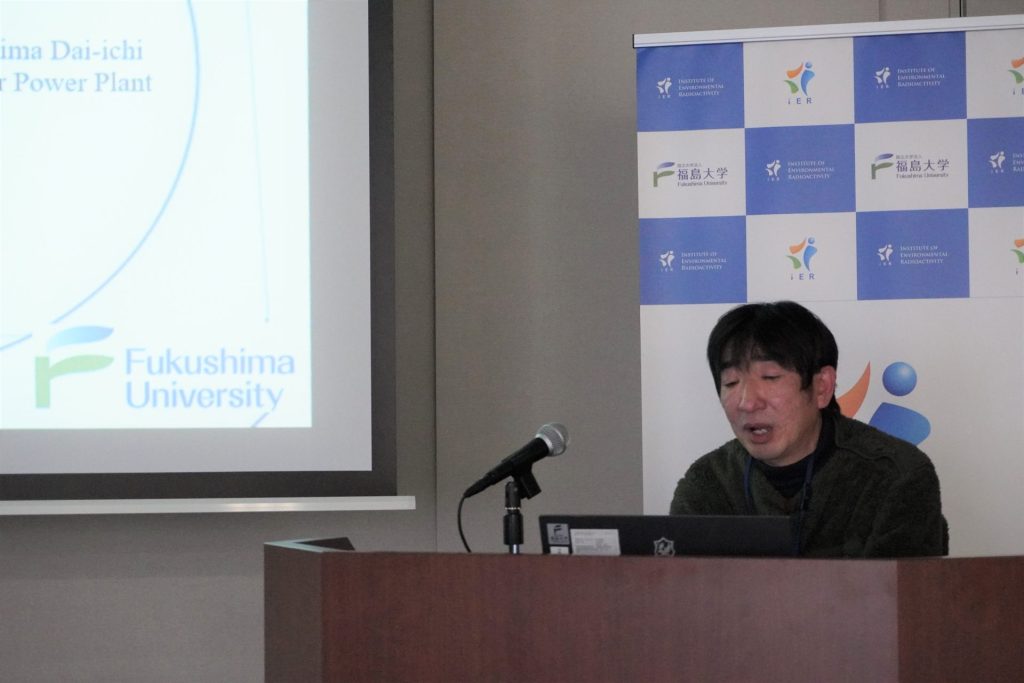January 20, 2025 8th IER seminar of FY2024 was held <Graduate Students>
| Date & Time | Mon. January 20, 2025, 13:30–14:20 JST | |||||
| Venue | 6F Conference room, Main Bldg. IER/Online (Zoom) | |||||
| Speakers | Mr. Iqbal HOSSEN (1st-year doctoral student, major in Environmental Radioactivity, Graduate School of Symbiotic Systems Science and Technology) Mr. SUZUKI Nobuhiro (2nd-year doctoral student, major in Environmental Radioactivity, Graduate School of Symbiotic Systems Science and Technology) (Presentation order) | |||||
| Lecture Titles | Influence of Nutrient Solution Composition on Cesium Uptake by Japanese Knotweed (Fallopia japonica) in Hydroponic Culture. (Hossen) Spatio-temporal variations in 137Cs concentrations in water bodies of an urban area. (Suzuki) | |||||
The Institute of Environmental Radioactivity (IER) regularly holds the IER seminar, where faculty members, researchers, and students present their research results, aiming to facilitate research activities and foster communication.
In the 8th IER seminar of this fiscal year, held on January 20, 2025, presentations were delivered by Mr. Iqbal HOSSEN (a first year doctoral student majoring in Environmental Radioactivity) and Mr. SUZUKI Nobuhiro (a second year doctoral student majoring in Environmental Radioactivity). Including online attendees, 11 researchers and graduate students participated.
Mr. Hossen in Rahman Laboratory examined the plant’s ability to absorb and compartmentalize cesium under varying nutrient conditions. F. japonica was selected for its rapid adaptability, strong reproductive capacity, and resilience in diverse environments, making it a suitable candidate for studying radioisotope tolerance. Mr. Hossen reported that F. japonica efficiently absorbs cesium, primarily sequestering it in root tissues while limiting its translocation to aerial parts, particularly at higher K⁺ concentrations. His ongoing research aims to further understand the mechanisms regulating cesium uptake and retention in F. japonica, enhancing its potential application in environmental remediation.
According to the presentation by Mr. Suzuki in Wakiyama Laboratory, he conducted measurements of suspended and dissolved 137Cs concentrations in Koriyama, reasoning that few studies have focused on urban areas and that the behavior of 137Cs in urban areas remains uncertain. In addition, he measured the stable isotopes δ¹⁵N and δ¹³C. The dissolved 137137Cs concentration ranged from 0.002 to 0.03 Bq/L, with no noticeable spatial variation. The suspended 137Cs concentration ranged from 0.7 to 6.9 kBq/kg and tended to increase toward downstream direction. He presented findings suggesting that the inflow of suspended particles was responsible for the increase in 137Cs concentrations. Furthermore, the positive correlation between 137Cs concentration and δ15N suggests that any of anthropogenic substances may be a factor in the increase in 137Cs concentration.
After each presentation, various questions and comments were raised by IER faculty members and graduate students.



